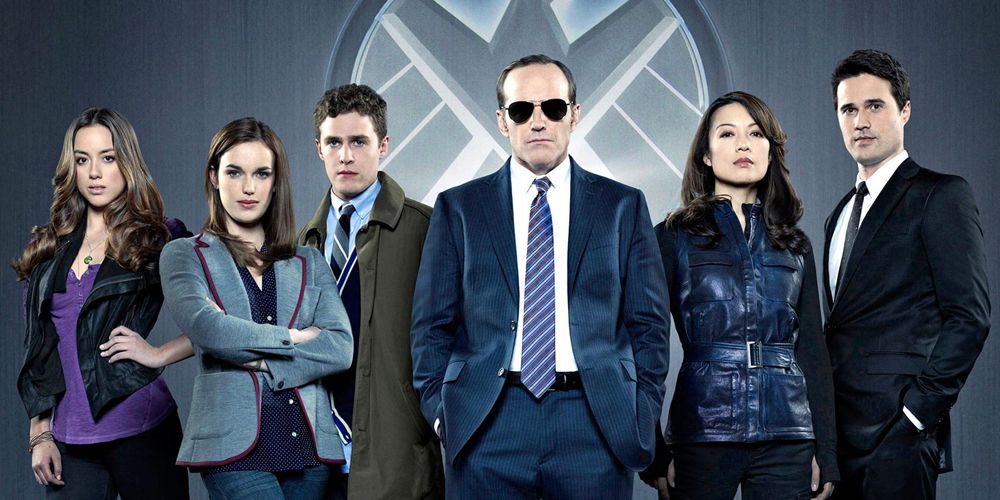Marvel's Agents of SHIELD concluded its seven-season run with a two-part finale that involved plenty of complicated time travel. Now, showrunners Jed Whedon and Maurissa Tancharoen have explained how they were able to map out the complicated storyline of the final season and the intent behind the time jump at the end of the series finale.
The seventh and final season of Agents of SHIELD centered on the team as they traveled through time in an effort to prevent the semi-robotic beings known as Chronicoms from establishing Earth as their new home and erasing S.H.I.E.L.D. from history. The season culminated with a two-part finale, titled "The End Is at Hand" and "What We're Fighting For," in which our heroes are able to defeat the Chronicoms and restore the timeline changes caused by their time-traveling adventures. The process involved a host of complicated science-fiction rules, including divergent timelines and the Quantum Realm, that required careful planning on the part of the showrunners.
During an interview with AV Club, Whedon explained that they approached the time-travel component of the finale by setting up ideas they would figure out how to tie together down the line. "We knew what this season was going to be at that point. We knew that we were going to be jumping through time. And so we planted little stuff that would be easily avoidable if we didn’t end up tying up those loose ends. You know, people in hazmat suits with no faces are easy to excuse as anything else. But we sort of had an idea of what we were gonna do—with no real sense of how we were going to tie that all together. But, you know, confident that we could probably figure it out. So we sort of threw some balls up in the air and hoped that we’d be able to juggle them later. We knew we would have to explain the Fitzsimmons of it and that part of it was its own little bubble. But, yeah, we went in with, I would say, some distant hopes on the horizon. But it did become a brain pretzel-twister by the end," Whedon explained.
The series closed with a one-year time jump into the future where the team held a virtual meeting at the Krazy Kanoe bar. As they reflected on the time together as agents, fans learned details on how the story of each character unfolded, with Phil Coulson ending his journey by traveling the world in a remodeled version of Lola, his 1962 Chevrolet Corvette. "I do think the one-year jump serves to amplify that bittersweet quality, because we, as the audience, are aware that they’ve been in their new lives, separate from each other, for a year. They’re established, they’re starting to settle into it. But seeing them in that room, and then learning that it’s a virtual room where they actually can’t reach out and touch one another, or give each other a hug... I think in that feeling of longing for one another and that feeling of the loss of what once was—it really lands the bond that they will have forever, even if they won’t be in each other’s lives," Tancharoen said of the decision to take the viewers a little bit ahead of time before the series wrapped.
The conclusion of Agents of SHIELD marks the end of an era for Marvel television as it's one of, if not the last, shows that started before the TV and film divisions were merged with Kevin Feige as Chief Creative Officer. Now, Marvel Studios is set to release multiple television projects for Disney+, including The Falcon and the Winter Soldier, WandaVision, Loki, and more.
Fortunately for those who have not opted to sign onto Disney+, Marvel still has projects being lined up for other streaming platforms. Helstrom, for example, is slated to hit Hulu in mid-October of 2020.
Marvel's Agents of SHIELD is now available on Disney+.
Source: AV Club

